Appreciation
Appreciating the Evolution of Chinese Script Types
Daniel Chak Kwong Lau
Associate Professor of Academy of Visual Arts, Hong Kong Baptist University &
Member of China Calligraphers Association
The uniqueness of Chinese calligraphy as a self-expressive form of art lies in its graceful integration of the literary content and the visually pleasing elements of Chinese characters, which are created through a deceptively simple writing brush. Through skillful manipulation of the pliant brush tip, calligraphers can create both obvious and subtle variations of strokes and lines that enable him or her to express ideas and sentiments.
In the development of Chinese calligraphy, different script types have evolved through the ages. To elucidate the characteristics of different script types, the author created a series of calligraphic works titled “Harmony.” Rendered in 9 major script types and a special calligraphic mode of fountain pen calligraphy, this series incisively interprets the notion of evolution through the Chinese character “harmony.” 1
01 Oracle-Bone Script
Literally “shell-and-bone writing,” oracle-bone script refers to ancient Chinese writing engraved on animal bones or turtle shells by sharp knives. Dating from the fourteenth to the eleventh centuries B.C., oracle-bone writings were largely records of divination of the royal house. Characterized by the ubiquitous pictorial elements, the primitive appearance of the writing reminds the modern audience of the early effort to record through carving abstract lines in imitation of natural objects, lives and phenomena, and even much more abstract concepts like “harmony.” Executed in ink on paper, the brushstrokes of the author’s contemporary interpretation of oracle-bone writing are characterized by straight and thin lines with sharp endings. The rough and austere brushwork reflects the contemporary calligrapher’s attempt to relive a sense of spontaneity and unevenness in the ancient’s action of carving thin strokes in intaglio.
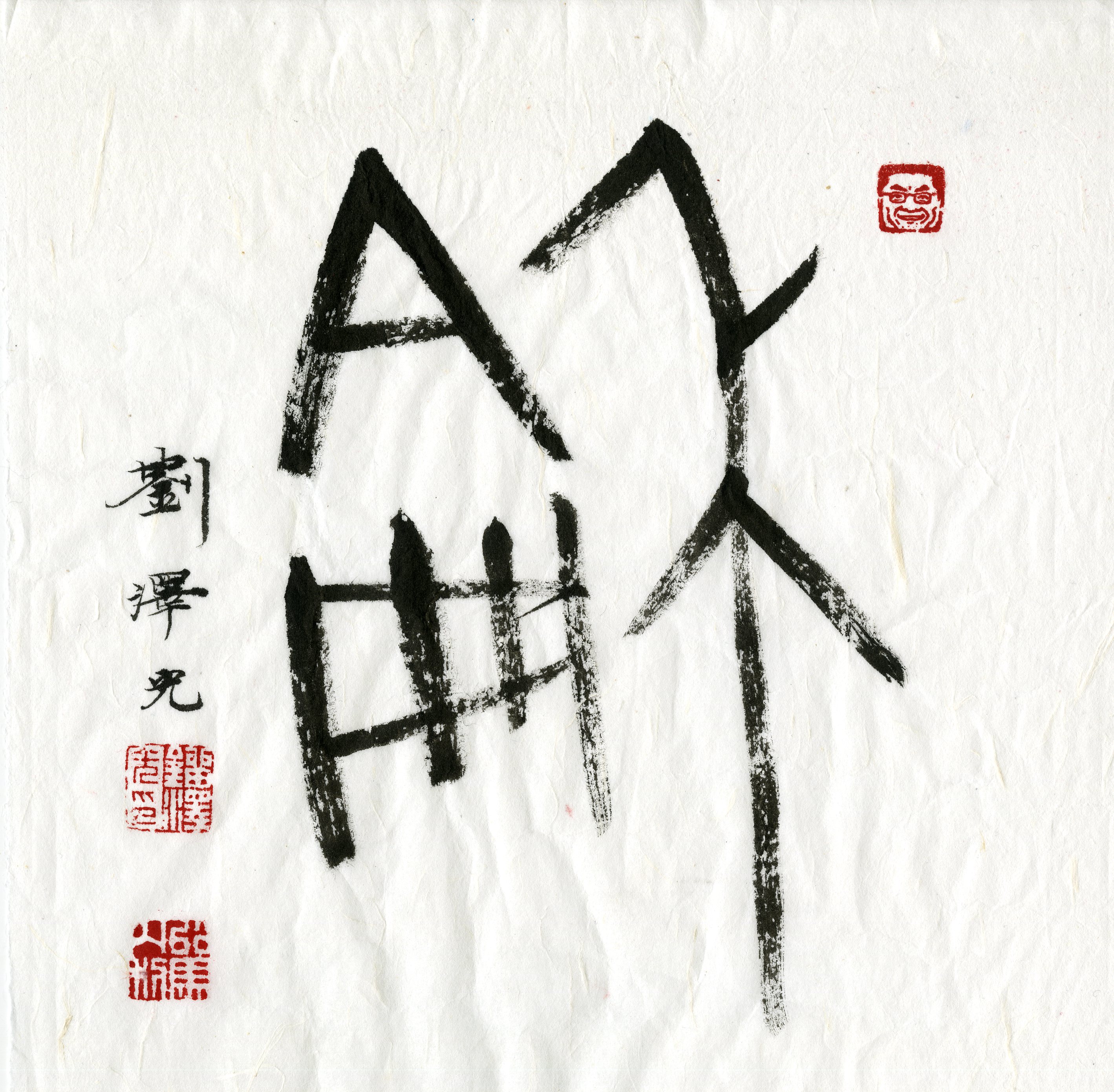
02 Great-Seal Script
Also known as bronze script (jinwen 金文) or zhouwen 籀文, great-seal script largely appeared as the inscriptions of the bronze ritual vessels of the Shang and Zhou dynasties (ca.1600-256 B.C.) The size of the characters can vary drastically and dramatically within the whole work or even on the same line. Retaining a lot of pictorial elements, the character structure is complex, constructed on the basis of more curvilinear lines, hence embodying a feeling of classical elegance.
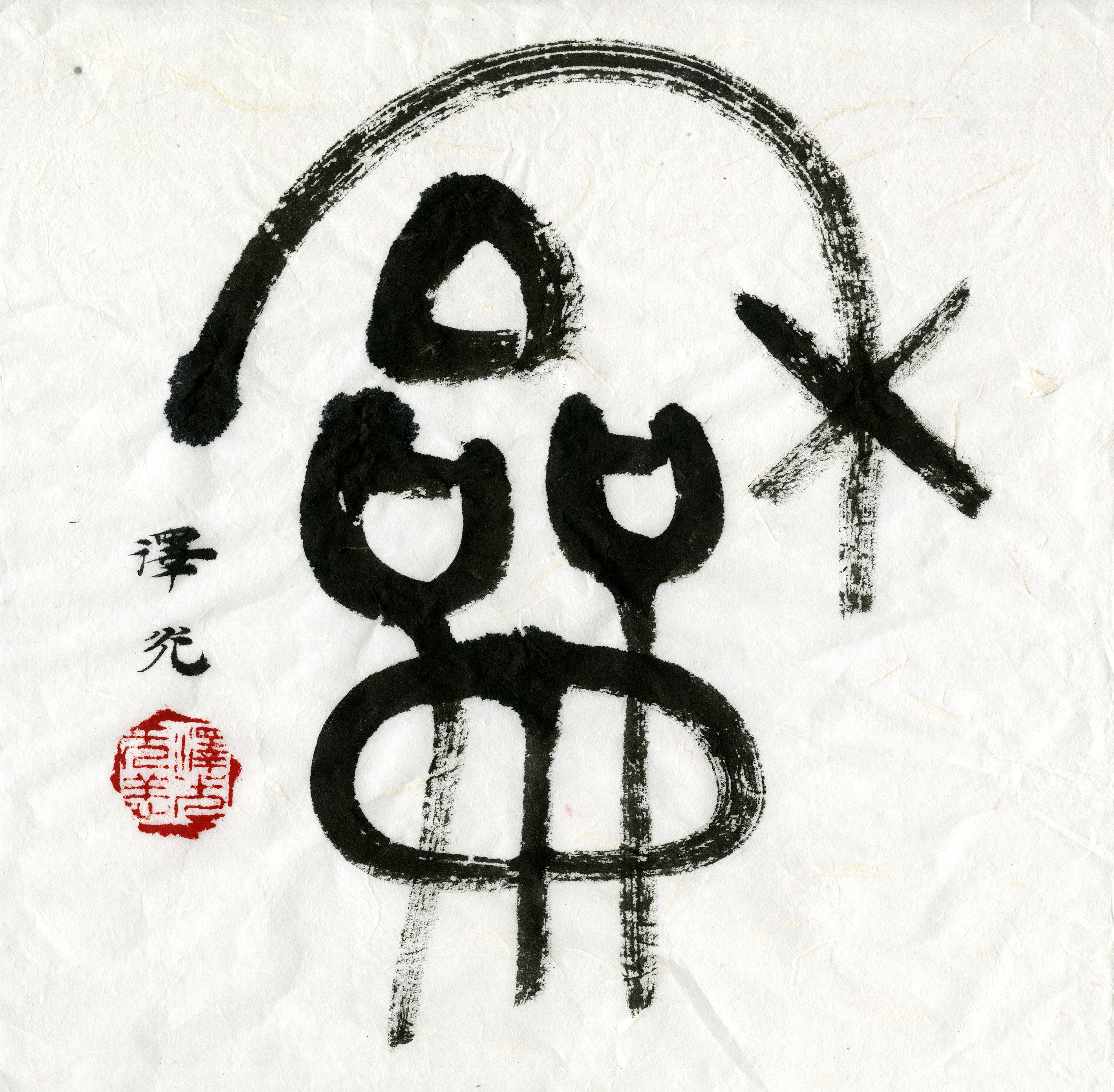
03 Small-Seal Script
As a product of the unification of China under the Qin dynasty (221-206 B.C.) established by the first emperor Shi huangdi 秦始皇帝, small-seal script represents a conscious effort to unify and standardize the writing system. Characterized by thin and curvilinear lines and symmetrical and relatively less complex character structure, the emergence of the small-seal script as the later form of the archaic script witnessed an early decision to simplify writing. Expressed with brush and ink that is clean and neat, the author’s contemporary interpretation is handsome and airy as a result of rendering slight brush modulation within the prevailing centered-tip brush method.
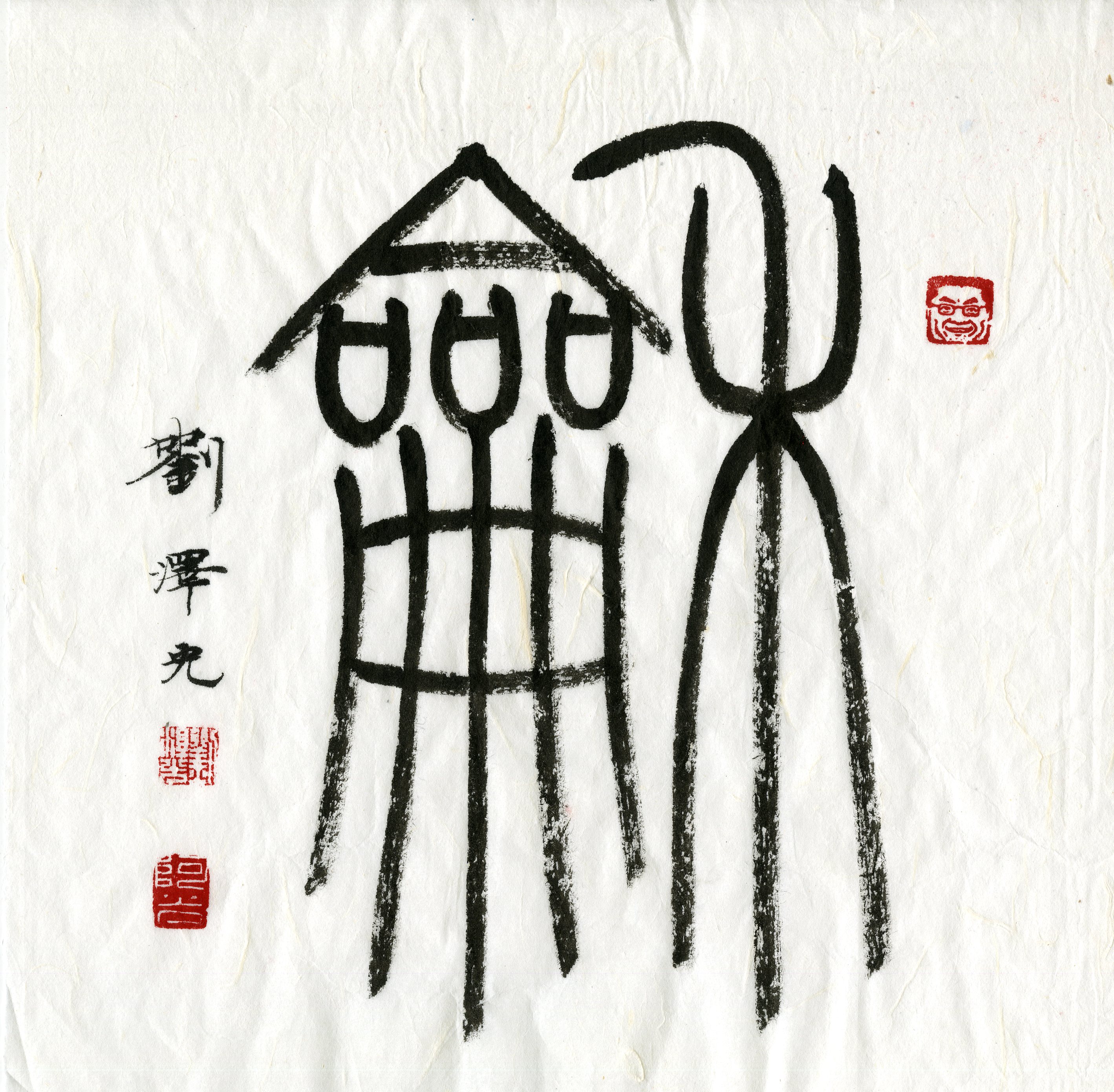
04 Clerical Script
Popularly used in the Qin and Han dynasties (221 B.C.- A.D. 220), clerical script is a bridge between the archaic scripts and the modern scripts. Clerical script is marked by the outwardly flaring shape of the horizontal strokes, and the right and left downward slanting strokes. The further simplification of character structure and reduction of the number of strokes in characters successfully catered to the ever-increasing need of clerical efficiency in the Han dynasty. Aesthetically, the emphasis on the rhythm of the conscious brush movement reflects a growing interest in the expressive potential of the brush. This subtle dynamics within the brushstrokes of the clerical script, in a sense, facilitated the subsequent evolvement of the more modern scripts.
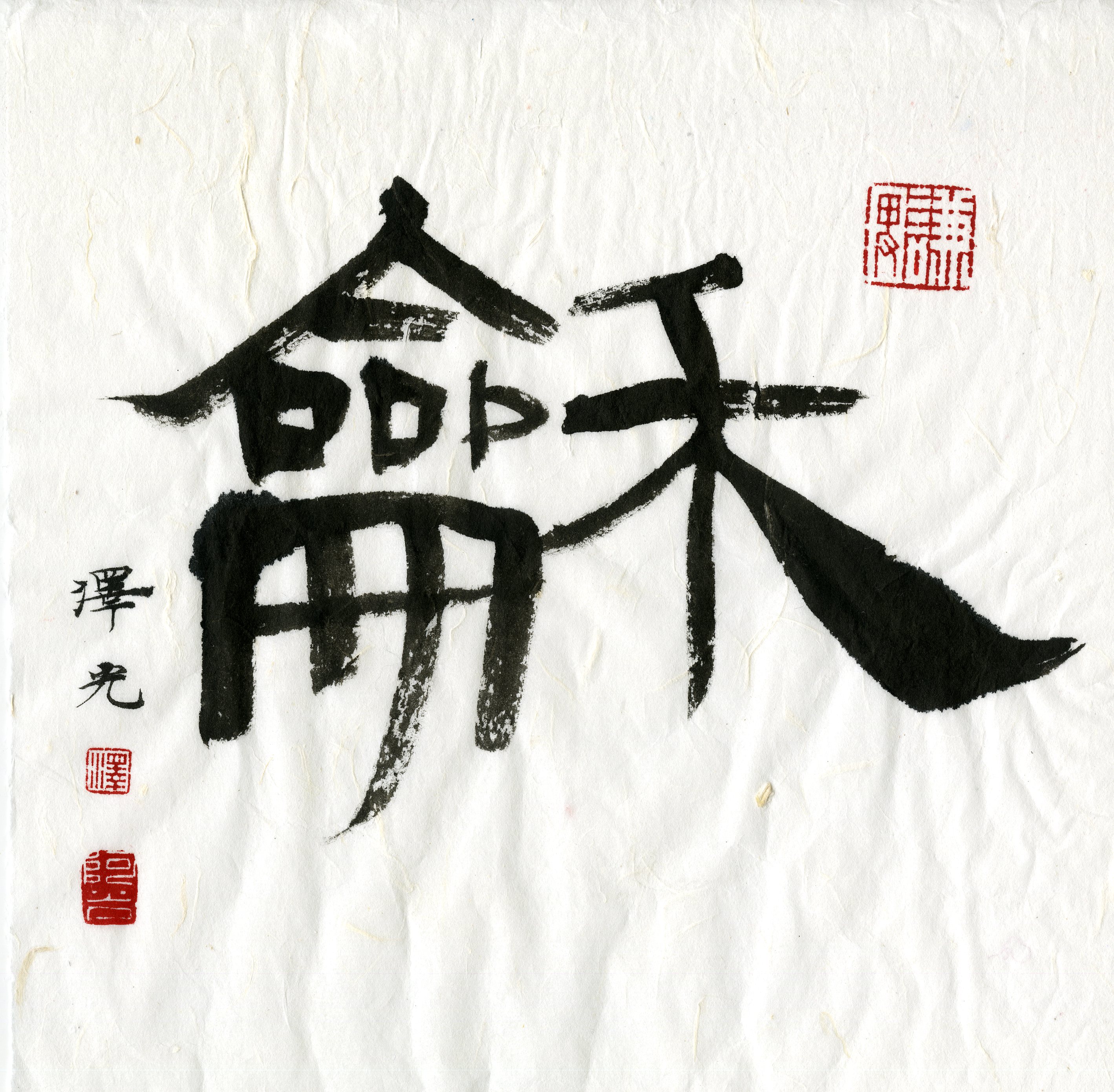
05 Draft-Cursive Script
As an abbreviated form of clerical script, draft-cursive script originated around the second century B.C. Retaining the flaring stroke of clerical script, draft-cursive script was developed by rendering the clerical script in a speedy manner; hence it is also known as cursive-clerical script.
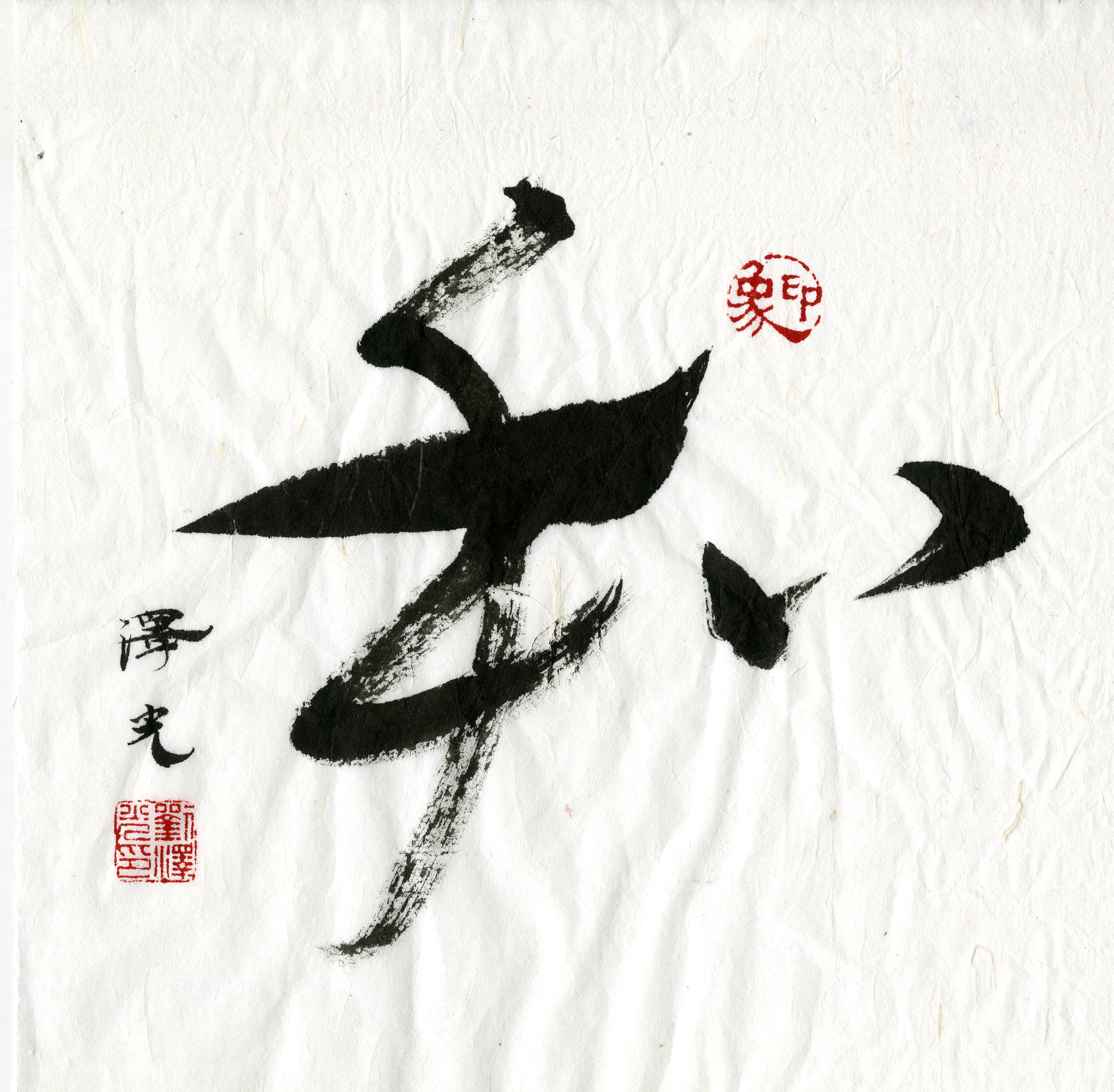
06 Cursive Script
Cursive script matured in the third and fourth centuries. Fluidity and speed are emphasized in cursive writing. Relatively more abbreviations and linkages are used within and between characters. Though cursive calligraphy is the least constrained of all the major scripts, the order of the strokes, the manner in which abbreviations of characters are created and the movement of the brush remain largely governed by rules and conventions.
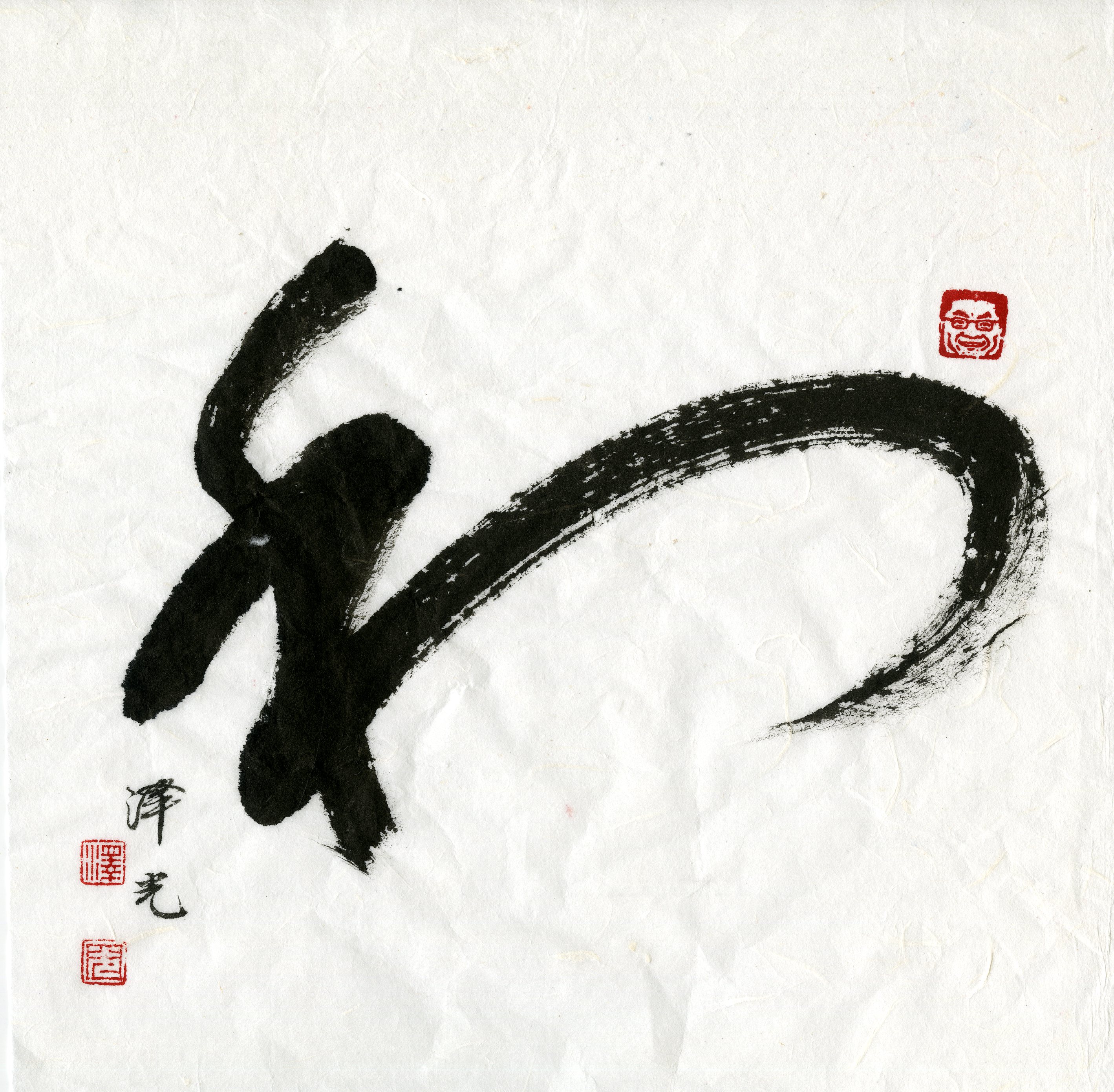
07 Standard Script
Standard script matured between the second and fourth centuries. With a conscious effort to regulate spacing, the characters of the standard-script writing become more uniform in size and orderly in appearance. On the other hand, the characters are square structured. Individual strokes are clearly and subtly executed. The high degree of legibility makes it best used in printing, and the script is commonly employed for official or public functions nowadays.
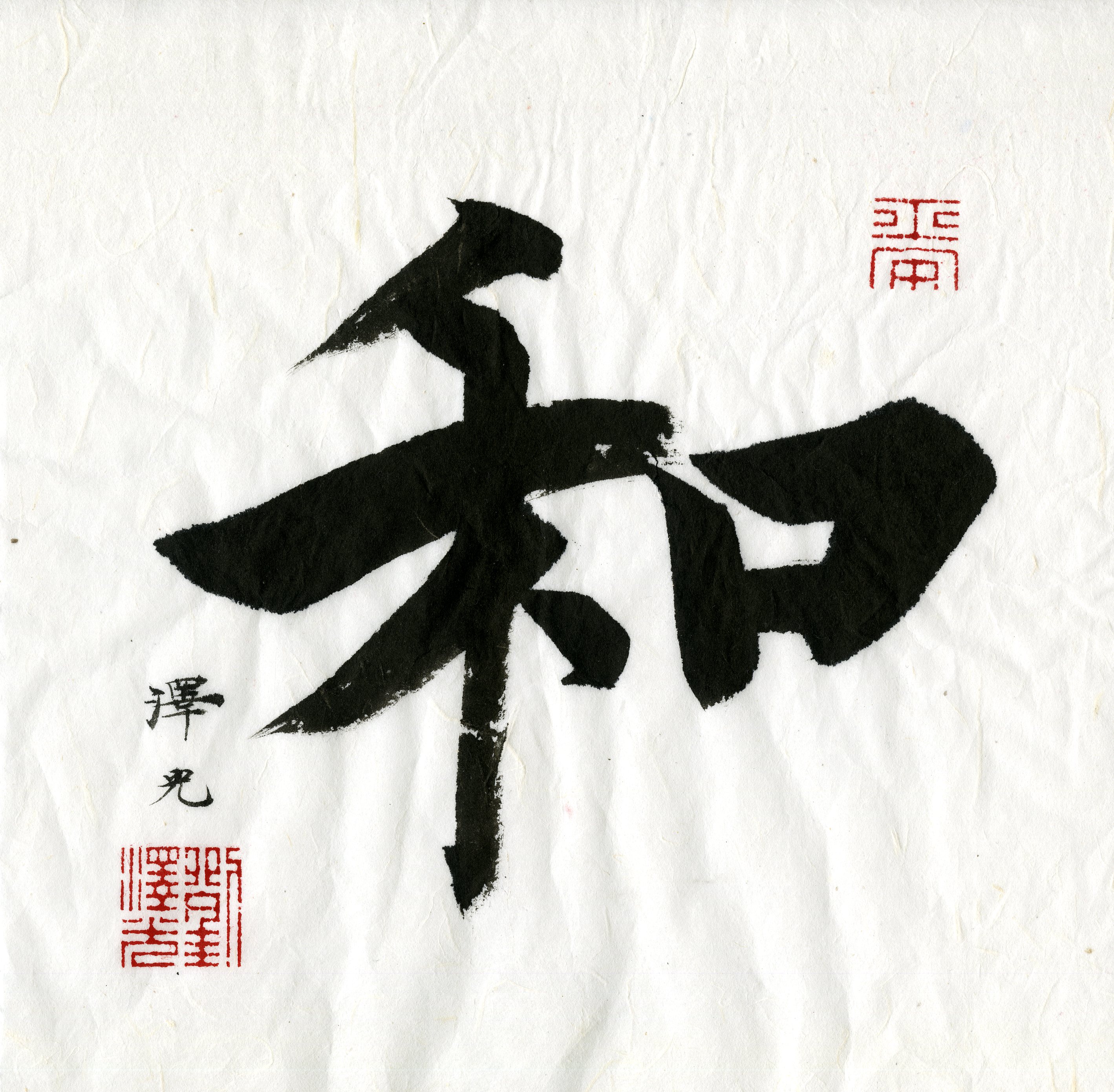
08 Small-Standard Script
Standard script can be distinguished by size: large-standard script (i.e. bigger characters) and small-standard script (i.e. smaller characters measuring 1-2 cm x 1-2 cm or even smaller). Maturing between the second and fourth century through the great effort of such major calligraphers as Zhong You (151-230), Wang Xizhi (303-361) and Wang Xianzhi (344-388), small-standard script developed as an independent mode of calligraphic expression. Consisted of small characters of relatively uniform size that are neatly arranged in columns within a rather small area, works of small-standard script reflect calligraphers’ brilliant command of a special type of refined calligraphic skills. To avoid stiffness, it is preferable that the work be rendered with the subtly flexible brush techniques of manipulating the short brush tip. The resulting rhythmic brushstrokes can create a sense of simultaneous stillness and fluidity.
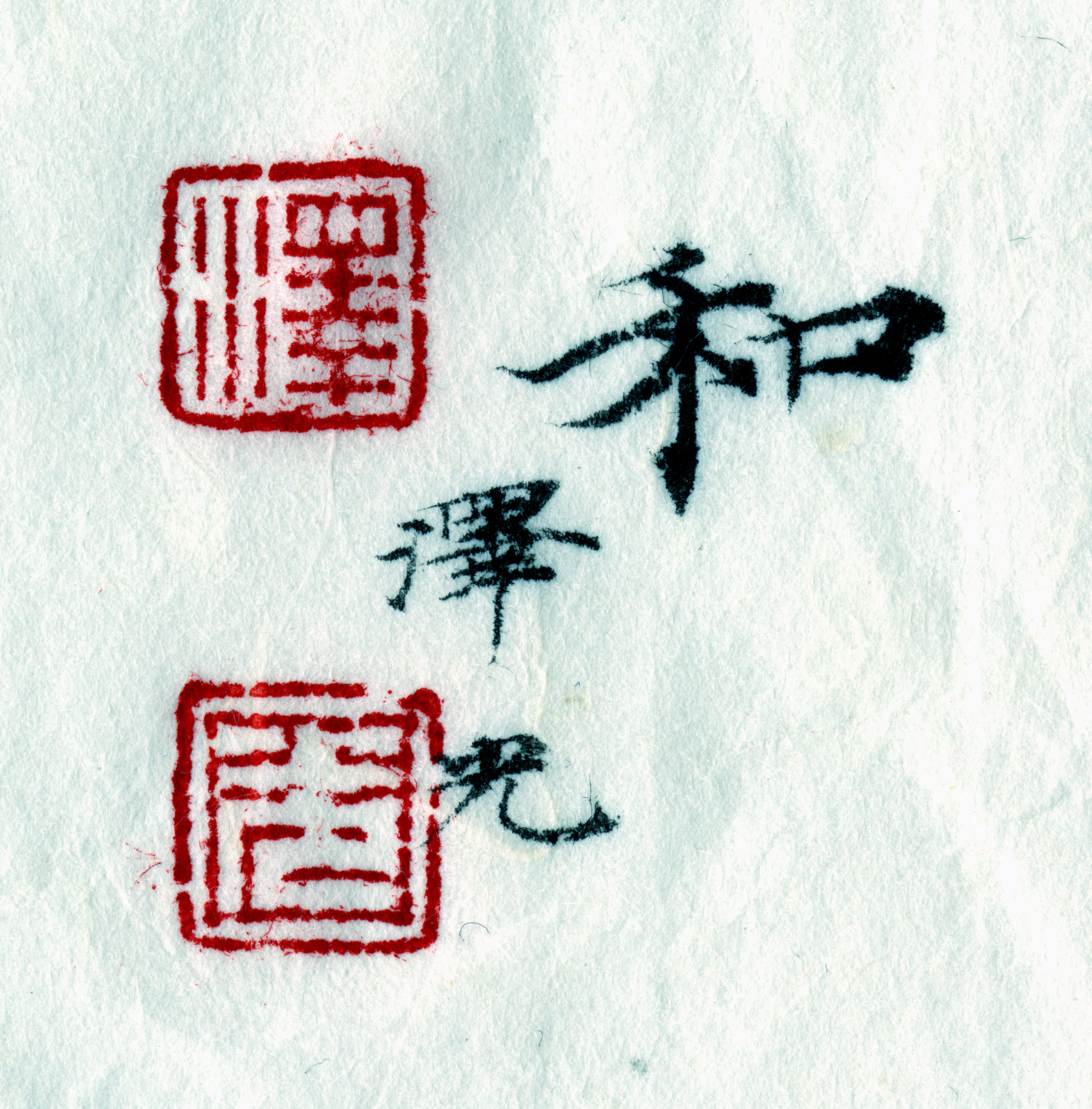
09 Semi-Cursive Script
A simplification of the standard script, semi-cursive script is a form of casual writing. Semi-cursive writing is written in a rather speedy manner, usually showing the links between the strokes within a character. Executed in a noticeably spontaneous way, personal touches are created with relatively more freedom of the brush.
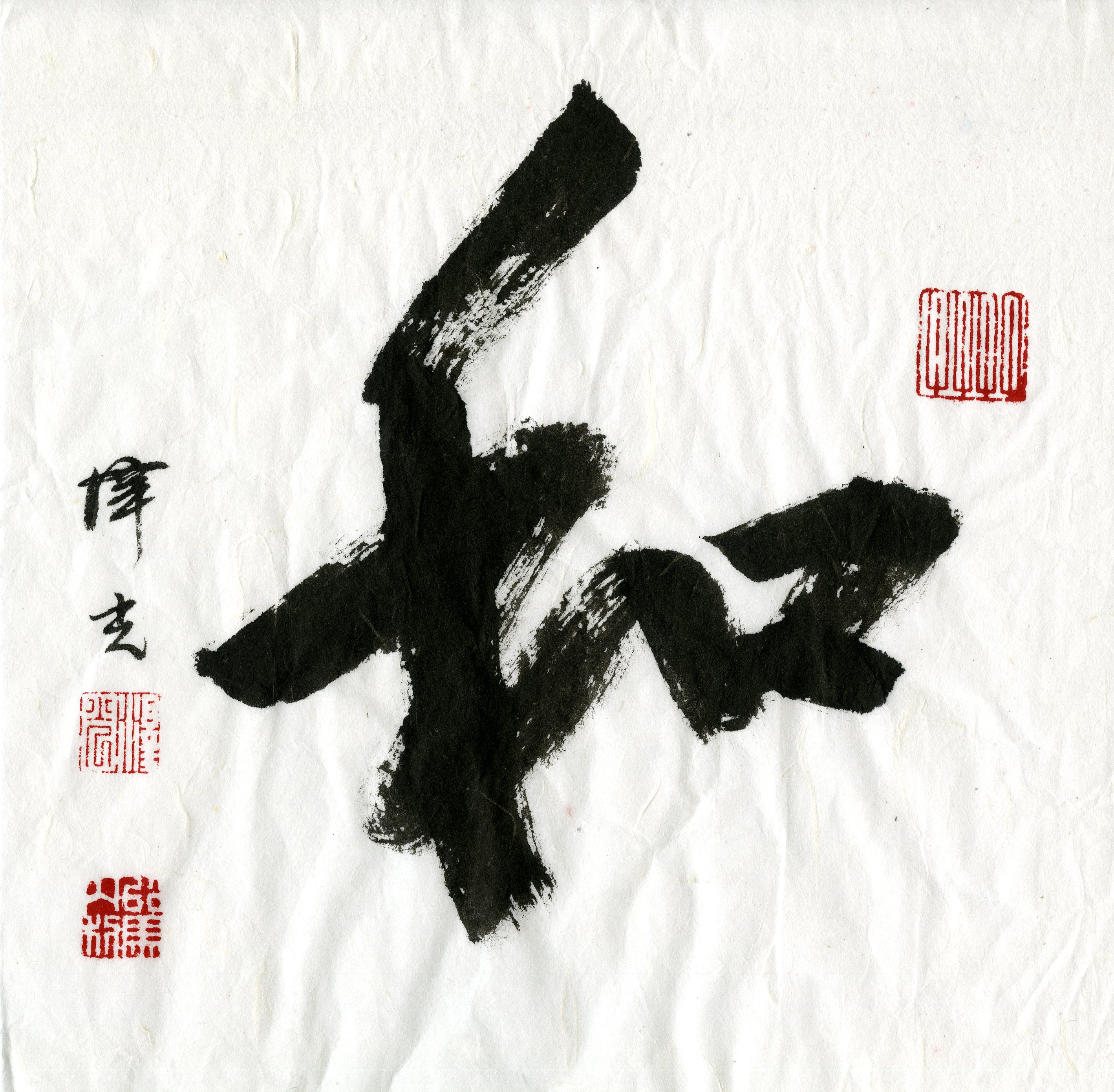
10 Fountain Pen Calligraphy
In many aspects of modern life, fountain pens, ball pens and pencils have been widely used as writing tools for such circumstances as writing drafts of poems and other literary works, notes, letters, greetings cards, thank you cards and Christmas cards. When wielding hard headed pens to mimic the wide range of variations in brushwork produced by calligraphic brushes, one needs to deliberately emphasize the pen’s press-lift gliding motion. Through expressions of light, heavy, slow and fast rhythms in wielding a pen, fountain pen calligraphers can create myriads of variations in dots, strokes and lines that convey sentiments and personalities.
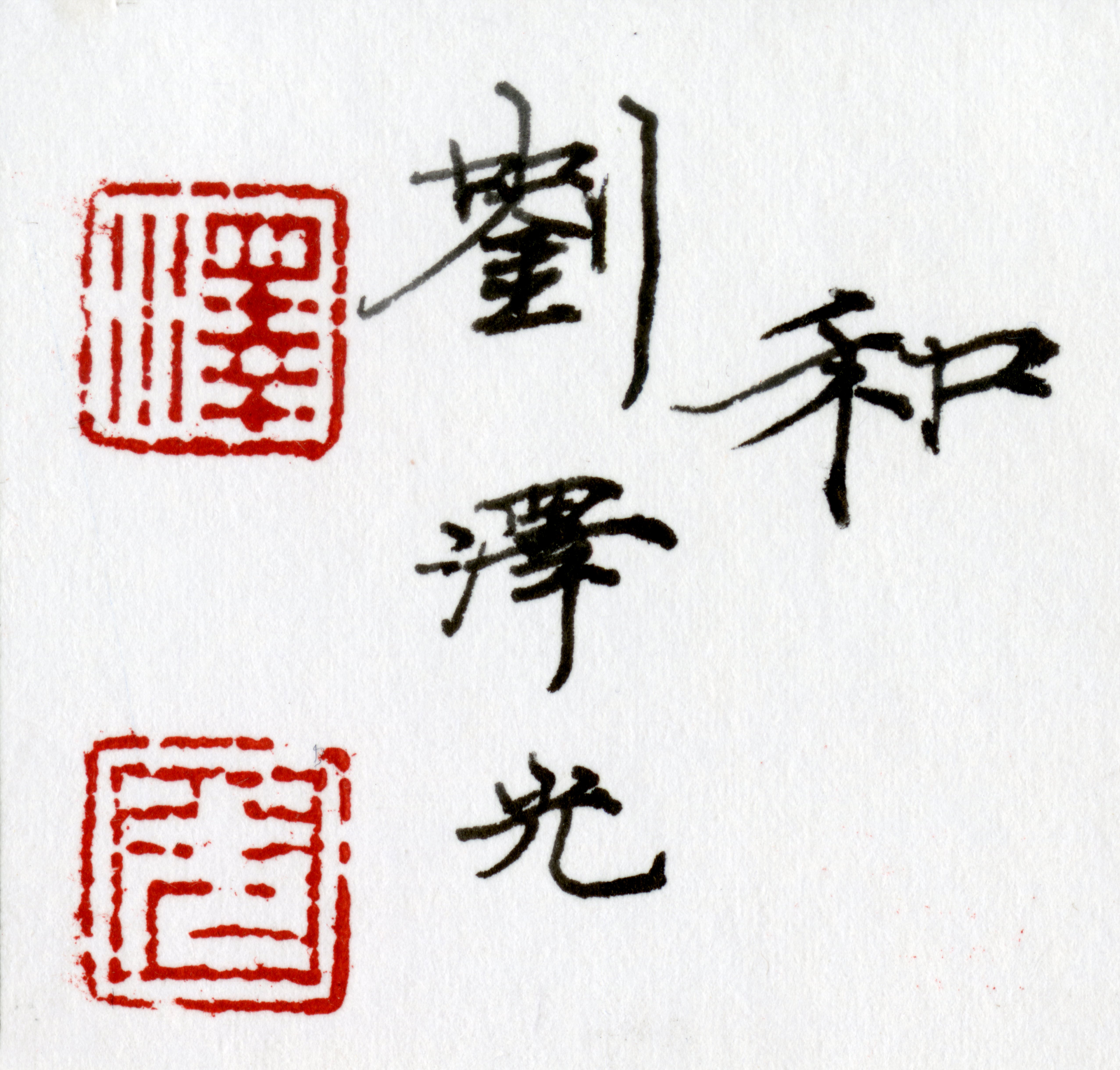
1 The above discussion on Chinese script types is a major revision of Lau Chak Kwong, Harmony: Synergy between Tradition and the Contemporary (Hong Kong: Academy of Visual Arts, Hong Kong Baptist University and Asia One Books, 2010), 10.
Script:
Oracle-bone script (9)
Great-seal script (31)
Small-seal script (97)
Clerical script (264)
Draft-cursive script (8)
Standard script (14)
Small-standard script (13)
Semi-cursive script (50)
Fountain pen calligraphy (9)
Format:
Hanging scroll (200)
Couplet (95)
Horizontial scroll (34)
Handscroll (32)
Album leaves (31)
Small composition (29)
Folding fan (22)
Title label (15)
A set of four screens (7)
Inscription (3)
Round fan (3)
Christimas card (2)
Letter (2)
Draft (1)
Handwriting copybook (1)
Collector:
Dr. Daniel Chak Kwong Lau (278)
Mr. Cho Yue Hon (172)
Mr. Louis Lee (13)
Mr. Tsang Kwong Choi (13)
The Han Yuanshan Family (1)
List All Records